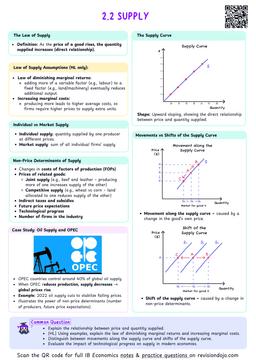Equivalence of the income, output and expenditure approaches
The circular flow of income
In subtopic 1.1.4, we introduced the circular flow of income.
Circular flow of income
An income flow in an economy where the value of the output produced is equivalent the total income earned from its production, which is also equivalent to the expenditures spent on purchasing that output.
The circular flow of income, illustrates how an economy consists of firms and households, which are connected together as a cycle:
- Households provide the factors of production (upper dashed blue arrow).
- Firms pay national income to households in return for the factors of production (solid pink arrow).
- Firms supply the goods and services to households, forming the national output (dashed pink arrow).
- Households use this income to purchase the goods and services from firms as national expenditure (solid blue arrow).
National output
The total value of the final goods and services produced by an economy, often measured by real GDP. It is also known as aggregate output.
National income
The total income of an economy, composed of the sum of wages, interest, rent and profit.
In other words, the circular flow of income indicates that:
National output = National income = National expenditure.
We saw that this flow of income can be represented by the circular flow of income model, provided in Figure 1.
Circular flow of income model
A model illustrating the flow of resources from households to firms, the movement of goods and services from firms to households, and the associated monetary flows, including household income generated from selling resources and firms' revenues from selling their products.

The circular flow of income model, illustrates how an economy consists of firms and households, which are connected through the economy:
- Households provide the (upper dashed blue arrow).
- Firms pay national income to households in return for the factors of production (solid pink arrow).
- Firms supply the goods and services to households, forming the national output (dashed pink arrow).
- Households use this income to purchase the goods and services from firms as national expenditure (solid blue arrow).
Figure 1 represents a closed economy. However, in the real-world, economies are open, and so also have leakages and injections from and into their income flow.
Leakages
The removal of funds from the income flow, represented by savings, taxes, or imports.
Injections
The addition of funds into the income flow through investment, government spending, or exports.
An open economy with leakages and injections is illustrated by Figure 2 below.

Leakages represent money leaving the circular flow, reducing the size of the economy. Leakages are composed of:
- Savings: income saved in financial markets instead of being spent.
- Taxes: paid to the government instead of being used for consumption.
- Imports: money spent on foreign goods and services.


